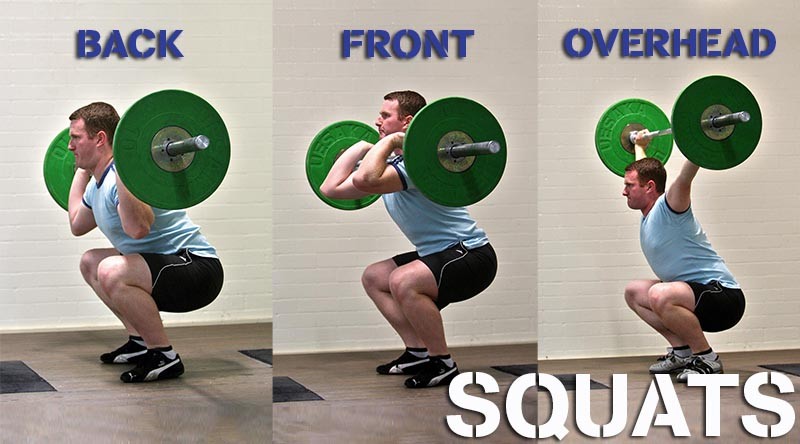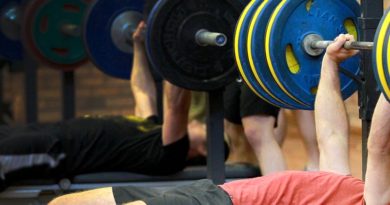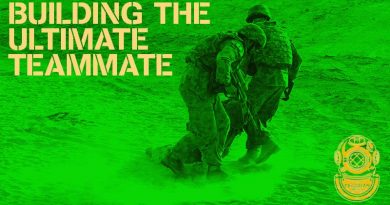Military Fitness – Part 10


Having looked at a variety of issues relating to military fitness over the past few issues, now it’s time to get down to some of the details and look at some of the key exercises that you should be including in your fitness program.
We’ll start with the exercise widely regarded as the king of exercises, the barbell squat.
So why squat?
The squat is the undisputed champion when it comes to developing strength in the lower body and, depending on how you do them, can also be an excellent exercise for core strength and flexibility.
It is also an exercise that the majority of gym goers either avoid like the plague, because it’s hard work, or butcher with poor technique.
Next time you are in the gym take a look at the big guys doing bench press and see how many have got suspiciously baggy pants covering their ‘chicken legs’.
Squats are far superior to leg presses, leg extensions and leg curls because they recruit the muscles of the leg in the same way that activities such as lifting, running and jumping do outside the gym.
Squats also promote flexibility through the posterior chain and prepare military personnel for load-carrying and other strenuous military tasks.
Squat myths
One of the reasons that a lot of people avoid squats is the false belief that squats are bad for the knees and lower back.
Properly performed, all three types of squats are both safe and extremely effective in developing lower body and core strength.
Another myth is that, when squatting, you should not go past the point where the top of the thigh is parallel with the ground.
There are two problems with this.
The first is that by stopping halfway through the squat you miss out on maximal development of the muscles on the back of the legs and an imbalance between the front and back of the leg is a key factor in many knee problems.
The second problem for military personnel is that the world doesn’t stop halfway to the ground!
Military personnel need to be able to get up and down with speed, power and full range of movement.
Full squats are critical for developing this ability.
There are three main types of barbell squats –
back squats, front squats and overhead squats.
Squat technique
All three types of squats share the same basic technique with the key difference being the placement of the load and the effect that this has on the core and shoulders.
The golden rules of squatting are:
- Feet should be shoulder-width apart or slightly wider
- Keep the head and chest up, to maintain a neutral arch in the spine
- For back squats, carry the bar across the muscles of the shoulder, not on the bones of the neck. Chances are if it hurts your neck you need to move the bar, those foam pads are for people who don’t know how to squat
- Inhale and brace the abs before starting to descend
- Push the hips back as if sitting down on to a chair, the upper body will incline forward but don’t use that as an excuse to drop your chest and round your lower back!
- Weight should be on the heels – coming on to the balls of the feet and lifting the heels is bad form and indicates poor posterior chain flexibility – fix it before squatting!
- As you descend into the bottom position, keep tight through the core and then drive out of the bottom with the quads, glutes and hamstrings
- Exhale as you pass through the top half of the movement
- Never compromise good back position for more reps or more depth, work on your strength and flexibility over a series of sessions.
Additional tips for front squats
Front squats impose additional demands on your core strength and shoulder flexibility.
You will definitely need to drop the weight back and you may need to stretch your forearms and shoulders to achieve the ‘elbows high’ position required for proper front squats.
Front squats are slightly less demanding on lower-back flexibility and can be a good option for people coming back from back injuries (check with your physio first).
Additional tips for overhead squats
Overhead squats are an excellent exercise for tying together upper and lower body strength and are really more of a core/shoulder exercise than a leg developer.
Because of the position of the load, you’ll need to drop the weight right down and take a very wide grip on the bar (many people have to start with a broomstick!).
The full overhead squat requires exceptional flexibility and if you have been living on a diet of pushups and bench presses you may need a lot of flexibility work before you can achieve a full overhead squat.
.
.
.
.

.
.






